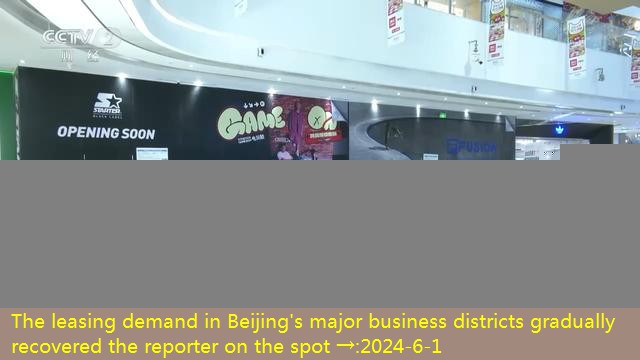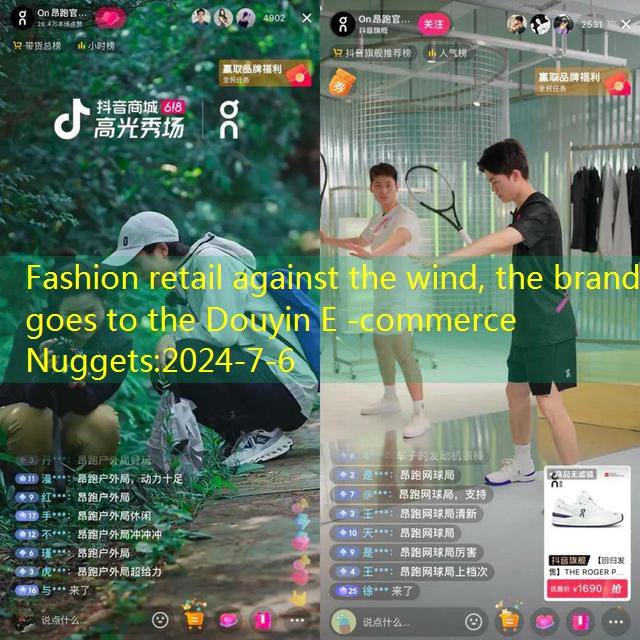The agency predicts that the Robotaxi in 2026 will realize large -scale commercialization.By 2030, the cost of Robotaxi in China will be lower than the cost of driving online vehicles, and the domestic ROBOTAXI market size will reach nearly 500 billion yuan.Although the prospects are broad, the current L4 -level autonomous driving practice still leaves the market’s “storytelling” impression.
Industry insiders interviewed by China Securities Journal reporters believe that the current L4 -level autonomous driving has strong uncertainty in technology and policies.In the field of passenger cars, the extensive commercialization of L4 -level autonomous driving technology is still in the “exploration” stage. The main application scenarios are unmanned taxis in commercial vehicles and limited areas.Relevant departments and related enterprises are trying to break through the restrictions on L4 -level autonomous driving technology in terms of policy, technology, and business models to promote coordinated development.
Enterprise competes to enter the bureau
At present, the automotive industry has entered the “intelligent” competition in the second half.In order to explore the development of L4 -level autonomous driving technology, car companies have seized the blue ocean market of autonomous driving public transport in advance, and tried to create a new application scenario in the travel field.
Recently, GAC and Didi Autonomous Driving announced that the joint venture, Guangzhou Anmei Technology Co., Ltd. was approved by the business license.The relevant person in charge of Didi told reporters that An Didi Technology’s first L4 -level Robotaxi production car was planned to mass production in 2025 and put in batches in batches to reach 10,000 vehicles.At the same time, traffic manufacturers such as Changan Automobile, ideal, Xiaopeng, radish running, Xiaoma Zhixing, Wenyuan Zhixing and other travel manufacturers have stepped up the layout in Beijing, Shanghai, Guangzhou, Wuhan and other cities to seize the L4 -level autonomous driving market.
According to national standards “GB/T 40429-2021), my country’s autonomous driving from low to high level 0 to level 5 is six levels.The industry calls it L0-L5.Starting from level L3, the automotive system has become the main body of the detection and response of the target and events during the driving process, and is considered a sign of high -end intelligent driving; L4 levels allow users to respond to the access request of the car system.Status ability.
A senior automotive industry practitioners told reporters that L4 -level autonomous driving technology is still optimizing. Enterprises need to debug software and hardware by collecting a large amount of test data to solve various types of small probability events that may encounter in autonomous driving.Therefore, it is more secure and controllable to apply L4 -level autonomous driving technology in public transportation.
The relevant person in charge of GAC Ean said that from the current industry environment, the B -end shared travel field is more friendly to the development of L4 -level autonomous driving.Public transportation such as taxis is an excellent “test field” for L4 -level autonomous driving technology.
This year, the autonomous taxi service from Beijing Daxing Airport to Yizhuang began to operate. Passengers can book and take autonomous taxis through Koma Zhixing, Wenyuan Zhixing, radish fast running, Baidu Map APP and other autonomous taxis.As of February 2024, Pony Zhixing’s mileage exceeded 30 million kilometers, and cooperated with local companies in the United States, South Korea, Saudi Arabia and other countries to promote Robotaxi’s research and development layout and team operations.According to the official website of Wenyuan Zhixing, Wenyuan Zhixing has achieved 25 million kilometers of autonomous driving, and the number of operations is nearly 1500 days. It has carried out autonomous driving research and development, testing and operation in 26 cities worldwide.According to the latest data of Baidu Apollo 20124, Baidu Radish Running Autonomous Driving Travel Platform has exceeded 5 million orders. The total mileage of autonomous driving testing and operation has exceeded 90 million kilometers, and it is growing at a rate of more than 100,000 kilometers per day.
Huatai Securities and other institutions predict that Robotaxi will realize large -scale commercialization in 2026; by 2030, the cost of domestic Robotaxi will be reduced to about 1 yuan/kilomeNearly 500 billion yuan.
Facing many uncertainty
Although there are many progress, the current L4 -level autonomous driving practice still leaves the impression of “storytelling” in the market.Driving technology promotion and landing, business prospects, security and other issues still face uncertainty.
Industry experts said that at present, autonomous driving technology cannot fully meet the needs of all road conditions, and the judgment of power and responsibility at the time of traffic accidents has not yet been clear. The current L4 -level autonomous driving application has set up strict scene restrictions and entry thresholds.The field can basically be applied only in the way of driving public transportation tests in the test area and other limited scenarios. It is far away to want to commercialize large -scale commercialization or use on private cars.
Tesla CEO Musk announced that Robotaxi will be released on August 8th.Musk once announced that Tesla Robotaxi will be “one step in place” and is not equipped with a brake pedal and steering wheel.Sales staff of new forces of automobile companies admitted to reporters, “Now all smart driving sells for futures. At present, buying smart driving models is optimistic about the development of high -end intellectual driving in the next few years.It is more convenient to enjoy mature high -end intelligent driving technology through OTA upgrades in the future. “
The reporter learned that the overall domestic autonomous driving technology promotion and landing follow the logic of the scope of the scope of the point and surface expansion, from the load to the manned extension.
Among the commercial vehicles, the commercialization of the L4 -level autonomous driving has been relatively clear.At present, logistics companies such as Zhongtong, Yuantong, and Shentong have begun to use smart driving heavy cards in long -range logistics transportation; on campus, office buildings and other environments, logistics distribution from express delivery stations to customers through unmanned cars is more common.
However, in the field of passenger cars, road conditions open roads in the city are more complicated.The industry generally recognizes that marginal scenes have become the core issues that restrict the development of autonomous driving.
The aforementioned senior automobile industry practitioners told reporters that the edge scene refers to the small special scenarios in the driving process, such as sudden irregular obstacles, other vehicles driving in violation of regulations, and even ignored by the system as a sky.Blue truck.”It is not so difficult to do a self -driving car driving according to the rules. The difficulty is that the system learning is 10%of the rules. The time, energy, and data that takes are far exceeded 90%of the rules.”
After the basic framework of autonomous driving is set up, a lot of time will be used to solve the learning of marginal scenes.Momenta, a self -driving technology company, has proposed that L4 -level autonomous driving technology wants to achieve scale, at least the safety level of human drivers, so it takes at least 100 billion kilometers to test.”At present, the test mileage of the enterprise obviously cannot meet this requirement.” Industry insiders revealed that according to the latest data from the Tesla AI team, the current Tesla FSD (Full Self-Driving) has a total of more than 1 billion miles (about 16.1100 million kilometers).
In addition to the imperfect intelligent technology of cycling, the road cloud coordinated technology required for L4 -level autonomous driving also faces many challenges.Wang Yu, the person in charge of the Mushroom Car Union Solutions and Vice President, told reporters: “The L4 -level autonomous driving wants to move from a limited area and line to the city’s global operations. Key technologies that need to break through are higher accurate positioning technology, more mature self -driving vehiclesSoftware and hardware technology, as well as more stable communication networks, more comprehensive vehicle collaboration perception and decision -making capabilities. “Chinese telecommunications staff mentioned in an interview with reporters that the difficulty of car road collaboration is not only in software and hardware technology.It also involves car companies, communications enterprises, road infrastructure enterprises and related management departments.In the development zone and the new city, the car and road collaboration projects built from scratch can coordinate the relevant parties at the beginning of the design and unify various standards; howeverWait for the unified update and upgrade of software and hardware to face many challenges.According to the calculation of Tsinghua University Intelligent Industry Research Institute, the cost of renovation of the equipment renovation of a single city cross -intersection is about 818,000 yuan, and the transformation cost of urban roads per kilometer urban road is about 500,000 yuan.About 397,000 yuan.
The unclear business prospects also largely affect the choice of corporate development paths to a large extent.Recently, Zhou Guang, CEO of Yuan Rongqixing, publicly criticized the L4 -level autonomous driving, saying that L4 -level autonomous driving is “drawing a map to run, all fake.” As the former L4 -level autonomous driving research and development company, Yuan Rong Qixing 2022 2022The development direction has shifted from L4 technology to L2 technology.For autonomous driving enterprises, technology, testing, and adjustment need to invest a lot of capital investment. The long business landing cycle of L4 autonomous driving will make the R & D -level autonomous driving of L4 a long -term tackling battle.EssenceThe person in charge of GAC Ean said that many L4 -level autonomous driving enterprises who entered the bureau still stay in the research and development or testing stage. The technical solution lacks “optimal solution” and high hardware costs, which makes the L4 -level autonomous driving mode unable to scale in the short term in the short termMass production.
Promote coordinated development of all parties
Relevant departments and enterprises are trying to break through the restrictions on L4 -level autonomous driving technology in terms of policy, technology, and business models.
Industry sources said that at present, my country ’s intelligent connected cars have been tested and verified from a small scale to a new stage of the rapid development of technology and ecological accelerated construction.At the technical level, bicycle intelligence and road cooperation are the relationship between longevity, complement, and empowering each other. It is not opposite, but the leading party of the two in the development process should be different.
For the core technology in the intelligent bicycle intelligence, the carblim think tank report proposes that the technical route of the central chip, operating system, lidar, and millimeter wave radar of autonomous driving technology industry chain has not yet been shaped. The policy support space is small.In the market -oriented competition, the best solution is formed through the survival of the fittest.
The coordination of vehicles involves many enterprises and departments and requires government guidance.Wang Yu said that my country has a solid foundation and rapid development advantage in infrastructure construction and 5G communication, cloud computing and other technologies. , Road Infrastructure, and other parties, encourage all parties to participate in the construction of intelligent networking infrastructure to form a cooperation mechanism for sharing of interests and responsibility.






















